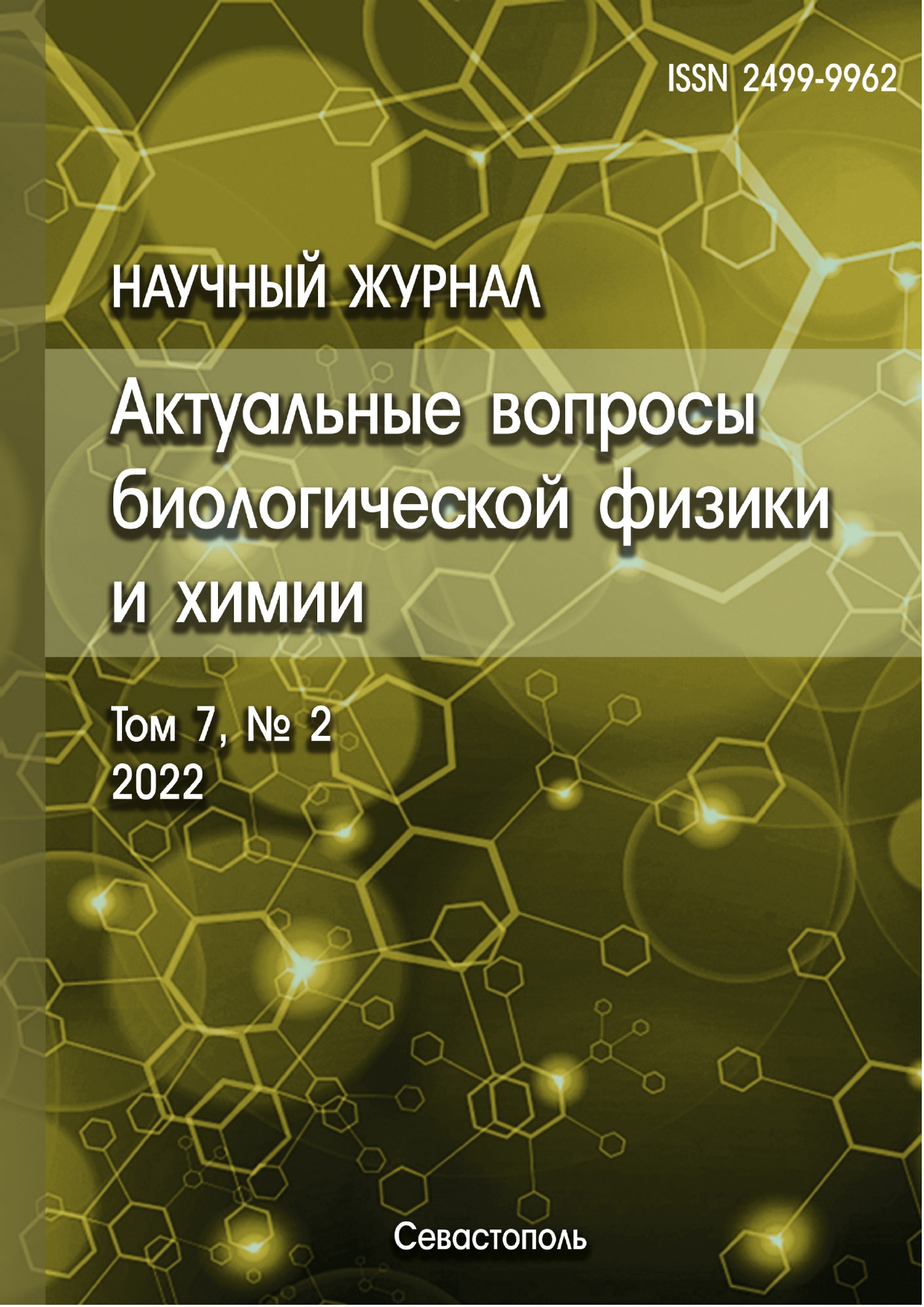Baku, Azerbaijan
Baku, Azerbaijan
Baku, Azerbaijan
The features of the spatial organization of the hylambatin molecule were investigated by methods of molecular mechanics and molecular dynamics. Hylambatin consists of twelve amino acid residues in the sequence: Asp-Pro-Pro-Asp-Pro-Asn-Arg-Phe-Tyr-Gly-Met-Met-NH2. Unlike all other tachykinins, hylambatin has a Met residue replacing the usual Leu at penultimate position. The tachykinin peptide hylambatin has been isolated and chemically characterized from methanol extracts of the skin of Hylambates maculatus, an African rhacophorid frog. It has been shown that intravenously administered hylambatin significantly increases the level of glucose and insulin in blood plasma. In this paper, the conformational flexibility of the hylambatin molecule was studied by methods of molecular mechanics and molecular dynamics. The conformational calculation of the peptide took into account non-valent and electrostatic interactions, hydrogen bonds and torsion potentials. Based on fragmentary analysis, stable spatial structures of the hylambatin dodecapeptide were determined, which can be represented as a set of conformations characterized by a relatively labile N-terminal tetrapeptide and a conformationally rigid C-terminal octapeptide. In the calculated stable conformational states, the effective interactions of the side chains of residues and hydrogen bonds were refined and energetically evaluated. It has been shown that the hylambatin molecule preferably forms practically isoenergetic conformations with various structural types at the N-end of the peptide chain, passing into the alpha helix at the C-end. By the method of molecular dynamics, the pattern of intramolecular mobility of stable conformations of the hylambatin molecule was modeled both in vacuum and surrounded by water molecules. Based on the calculated values of the dihedral angles, molecular models of energetically preferred conformational states of the hylambatin dodecapeptide were constructed.
: hylambatin, tachykinin, conformation, molecular mechanics, molecular dynamics simulation
1. Gullner H.G., Harris V., Yajima H., Unger R.H., Hylambatin, a structurally unique tachykinin: effects on insulin and glucagon secretion. Arch. Int. Pharmacodyn. Ther., 1984, vol. 272, no. 2, pp. 304-309.
2. Scheraga H.A. Recent progress in the theoretical treatment of protein folding. Biopolymers., 1983, vol. 22, pp.1-14. DOI: https://doi.org/10.1002/bip.360220104; EDN: https://elibrary.ru/XWEMEF
3. Nemethy G., Pottle M.S., Scheraga H.A. Energy parameters in polypeptides. 9. Updating of geometrical parameters, nonbonded interactions, and hydrogen bond interactions for the naturally occurring amino acids. J. Phys.Chem., 1983, vol. 87, pp. 1883-1887.
4. Momany F.A., Mc.Guire R.F., Burgess A.W., Scheraga H.A. Energy parameters in polypeptides: VII. Geometric parameters, partial atomic charges, nonbonded interaction for naturally occurring amino acid. Phys. Chem., 1975, vol. 79, pp. 2361-2381.
5. Popov E.M. Quantitative approach to conformations of proteins. Int. J. Quant. Chem., 1979, vol. 16, pp. 707-737. DOI: https://doi.org/10.1002/qua.560160403; EDN: https://elibrary.ru/YFDEEM
6. Agaeva G.A., Kerimli N.N., Godjaev N.M. Structure-function organization of neurokinin A and neurokinin B molecules I. Theoretical conformational analysis of neurokinin A. Biofizika, 2005, vol. 50, no. 2, pp. 203-214.
7. Agaeva G.A., Kerimli N.N., Godjaev N.M. Structure-function organization of neurokinin A and neurokinin B molecules II. Theoretical conformational analysis of neurokinin B. Biofizika, 2005, vol. 50, no. 3, pp. 404-412.
8. Maksumov I.S., Ismailova L.I., Godjaev N.M. The program for semiempirical calculation of conformations of the molecular complexes. J. Sruct. Khim., 1983, vol. 24, no. 4, pp. 147-148.
9. Commision on Biochemical Nomenclature Abbreviations and symbols for description of conformation of polypeptide chains. Pure Appl. Chem., 1974, vol. 40, pp. 291-308.
10. Cornell W.D., Cieplak P., Bayly C.I., Gould I.R., Merz K.M. et al. A second generation force field for the simulation of proteins, nucleic acids, and organic molecules. J. Am. Chem. Soc., 1995, vol. 117, pp. 5179-5188.
11. McCammon J.A., Harvey S.C., Dynamics of Proteins and Nucleic Acids. Cambridge Univ. Press, New York, 1987.
12. Agaeva G.A., Safarli G.R., Godzhaev N.M. Konformacionnoe povedenie molekuly gilambatina i ego fragmenta (5-12). Russian Journal of Biological Physics and Chemistry, 2021, vol. 6, no. 1, pp. 20-25. (In Russ.) EDN: https://elibrary.ru/BPBBXW










